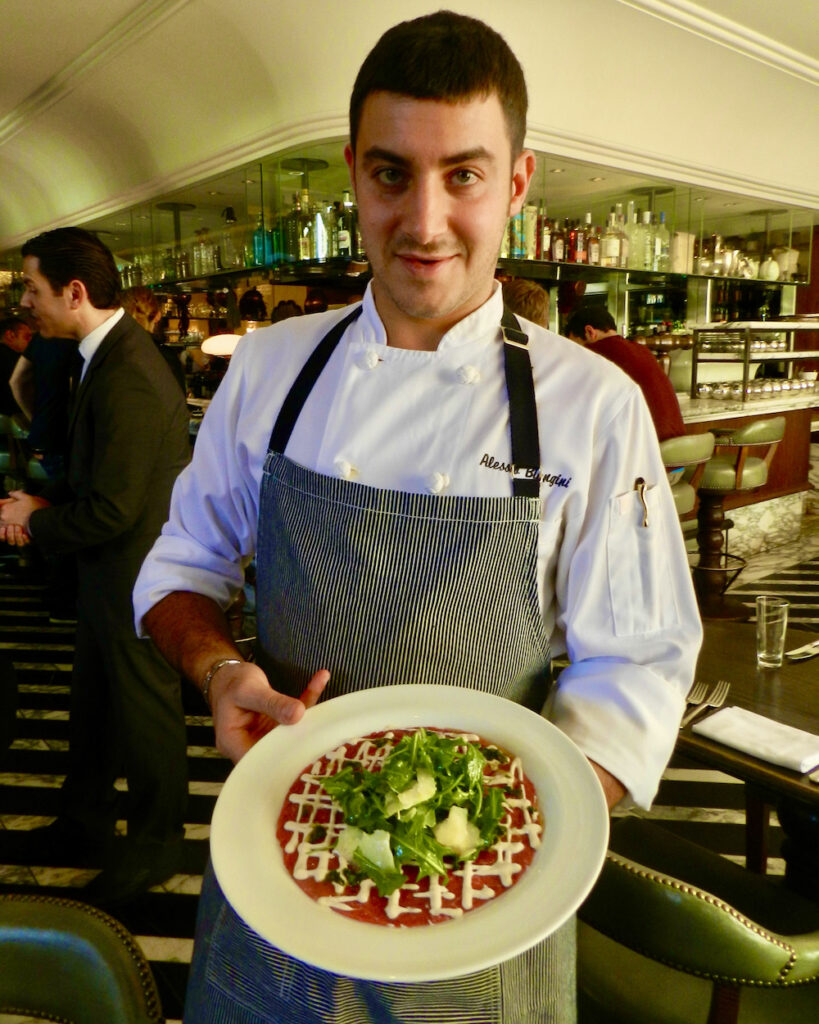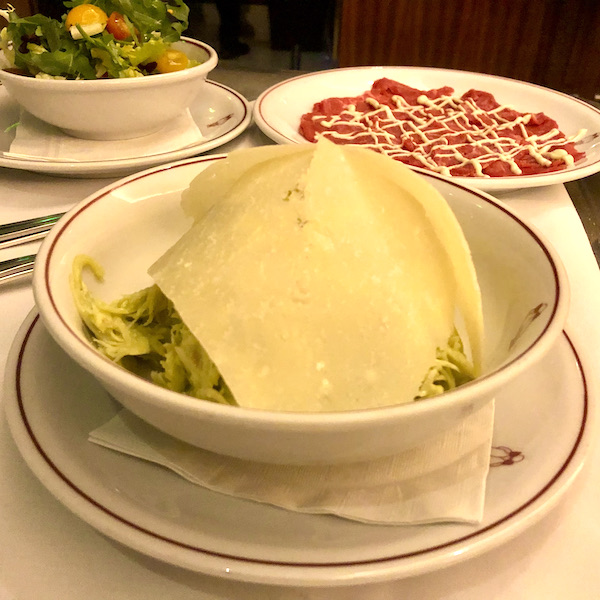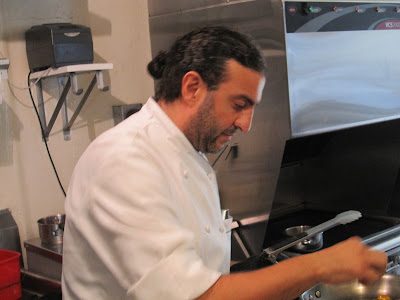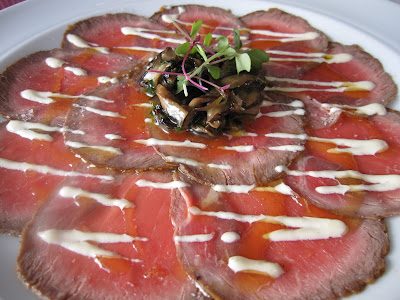When Harry Met Carpaccio and a New Dish was Born
(Gerry Furth-Sides) Once upon a time before the term “carpaccio,” referred to the popular marinated raw beef dish, it was merely the name of renowned Venetian Renaissance painter Vittore Carpaccio, who painted in vivid blood red colors.
Then a half a century ago Giuseppe Cipriani, owner of Harry’s Bar in Venice (Italy) was asked to please a carnivorous client who was forbidden by her doctor to eat cooked meat. He thought of the painter’s work helped dream up the dish for her. And a classic was born.
Sliced as finely as prosciutto, the raw beef in the classic covers an entire plate and is decorated with fine lines of mayonnaise flavored with mustard and a dash of Worcestershire. The very essence of the taste of the meat comes through in each piece, seasoned just so bring out and enhance the natural flavors.

At this point, it may be helpful to differentiate between the delicately shaved, quite flat layer of carpaccio and steak tartare, which is finely chopped or ground raw beef or horse meat usually served with onions, capers and topped with freshly ground pepper and with Worcestershire sauce. Mounded, tartare looks much like an oversized hamburger in the middle of a plate, especially since it is often topped with a raw egg and served on a piece of rye bread. This is quite a different approach to carpaccio, and rightly so since the name originates from the wild Tartars who roamed the rugged plains of Eastern Europe and Asia.
Thus it’s important to also note that Giuseppe Cipriani opened Harry’s Bar in what became the extremely luxurious Hotel Cipriani. Now down on its luck, and ocean levels as well, it is nevertheless filled with history. To catch a glimpse of it in its heyday, visit the Weisman Museum in Bel Air, where a most whimsical and memorable piece depicts zillionaire philanthropist, Peggy Guggenheim and party on a Cipriani balcony.
Harry’s Bar also claims the bellini and the dry martini. And while all three delicious items have gone on to world fame, only carpaccio has continued to evolved, and you can taste the results all over Los Angeles.
Chef Antonio Mure even honored the dish by naming his restaurant in the Pacific Palisades High-lands, Il Carpaccio, after it. Headlining the menu and now a signature dish is Carpaccio di Branzino, delicate, transparent little tabs of Mediterranean Sea Bass floating on the plate, with just enough dots of sea urchin on top to taste. The chef prepares the raw striped bass fillets by rolling them around a base of sea urchin roe, and slicing is so fine it is almost translucent. A touch of lemon pulls together all the flavors.
Chef Antonio Mure prepared a lovely buffalo carpaccio with a wild mushroom salad at Barrique on Main Street. It was as delicious and as tender as beef, and as delicate.
At coffeehouse, Le Mille, in Silverlake, a delicate trout capaccio is set aflame by its own natural red and white color, topped by peppercorns and onion slivers. Chef Michael Cimarusti of Providence is behind the wonder of this extraordinary item and menu.
If you ask nicely, Chef Francisco at Tra Di Noi in Malibu will painstakingly create a rectangle dish of marinated octopus carpaccio drizzled in olive oil. The gleaming white pieces each rimmed in burgundy are at once delicate and tender, yet crisp and crunchy, and taste like the sea.
As a Tra Di Noi special is a carpaccio dessert dish of shaved watermelon and cantaloupe with berries, topped by dots of panna cotta and mint slivers. Who needs cake?
When a dish evolves for as long as carpaccio, it does invite extremes. If seafood and fish can be substituted for meat, why not vegetables? One “meatless” version is Zucchini Carpaccio in an Arugula salad with Olive Oil and Salty Cheese. Where a talented chef slices the meat, fish, seafood or fruit carpaccio paper thin with a sharp knife, a mandolin is used in this “20-minute” version, or it can take longer since this piece of equipment can be quite tricky to use and prone to slicing fingers as easily as food.
To appreciate the work that goes into preparing carpaccio, try an easier beef version at home. Accomplished chef Giada de Laurentis advocates tying a beef tenderloin with kitchen twine to help maintain its shape, then freezing it to ensure that the center stays rare when cooking a small piece of meat. Her next move is rubbing the piece of frozen beef with salt and pepper, and then searing it on all sides in a tablespoon of oil in a heavy small skillet over high heat. She then refreezes the beef for about an hour until it is almost frozen and then slices it as thinly as possible. The beef is then arranged to cover a plate of arugula with parmesan cheese shaved over it.





 Gerry Furth-Sides
Gerry Furth-Sides  Barbara Hansen
Barbara Hansen  Chef-owner Alain Cohen
Chef-owner Alain Cohen  Roberta Deen
Roberta Deen  Jose Martinez
Jose Martinez  Nivedita Basu
Nivedita Basu